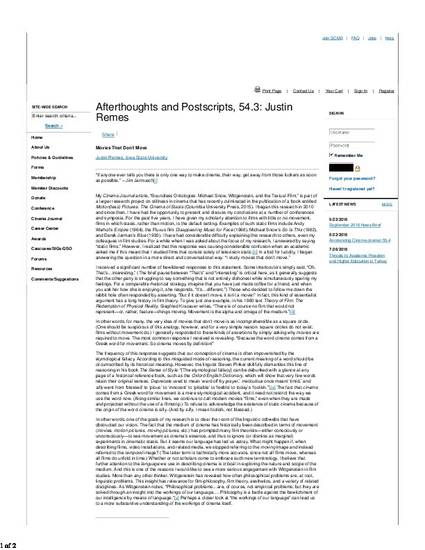
My Cinema Journal article, “Boundless Ontologies: Michael Snow, Wittgenstein, and the Textual Film,” is part of a larger research project on stillness in cinema that has recently culminated in the publication of a book entitled Motion(less) Pictures: The Cinema of Stasis (Columbia University Press, 2015). I began this research in 2010 and since then, I have had the opportunity to present and discuss my conclusions at a number of conferences and symposia. For the past five years, I have given my scholarly attention to films with little or no movement, films in which stasis, rather than motion, is the default setting. Examples of such static films include Andy Warhol’s Empire (1964), the Fluxus film Disappearing Music for Face (1966), Michael Snow’s So Is This (1982), and Derek Jarman’s Blue (1993). I have had considerable difficulty explaining this research to others, even my colleagues in film studies. For a while when I was asked about the focus of my research, I answered by saying “static films.” However, I realized that this response was causing considerable confusion when an academic asked me if this meant that I studied films that consist solely of television static.[ii] In a bid for lucidity, I began answering the question in a more direct and conversational way: “I study movies that don’t move.”
Available at: http://works.bepress.com/justin-remes/3/

This is an article from Cinema Journal’s Afterthoughts and Postscripts 54 (2015). Posted with permission.